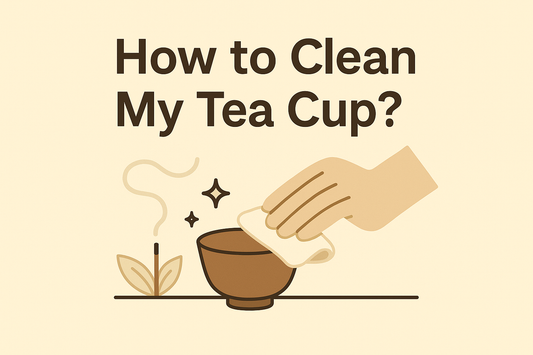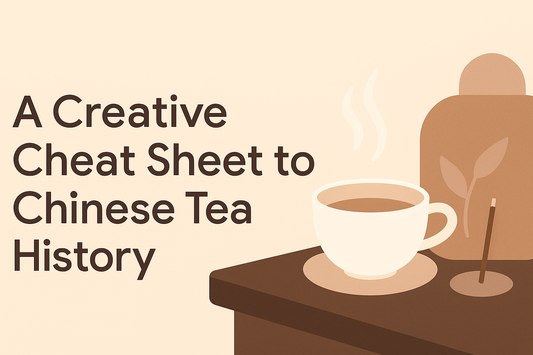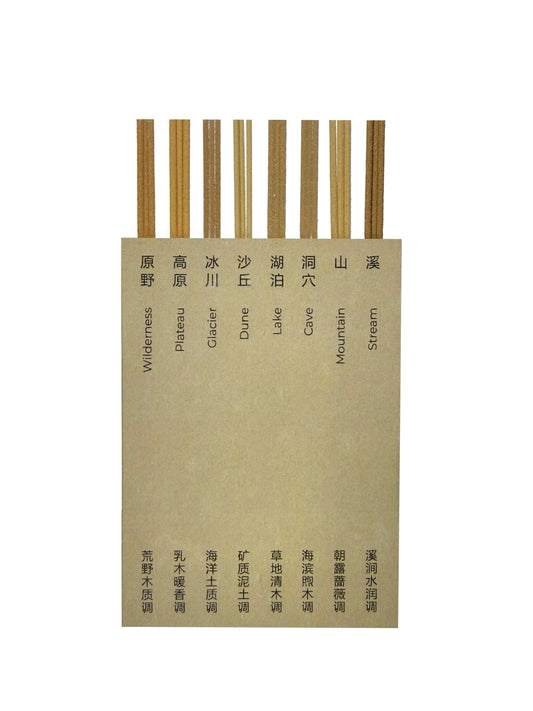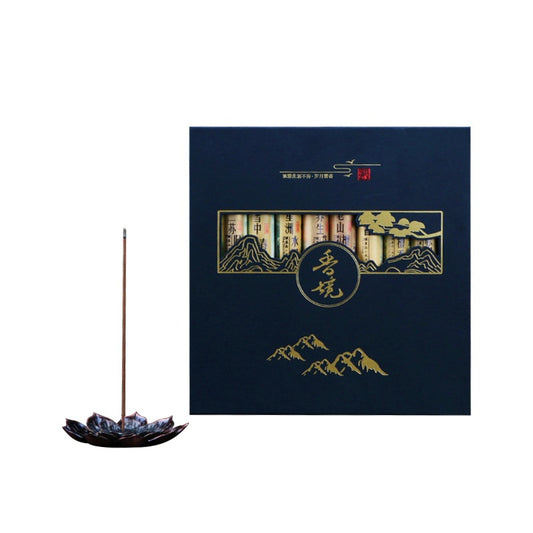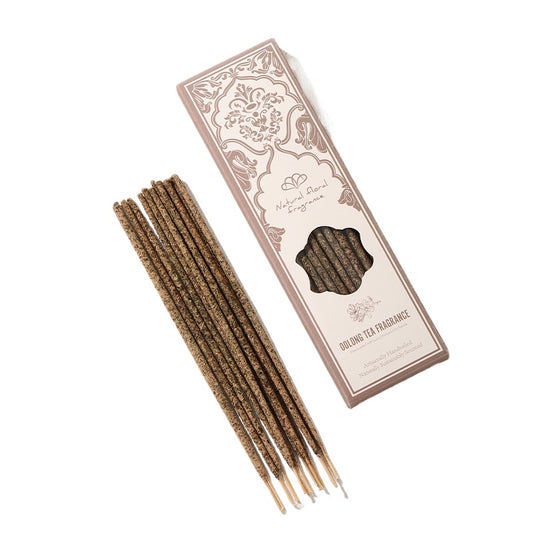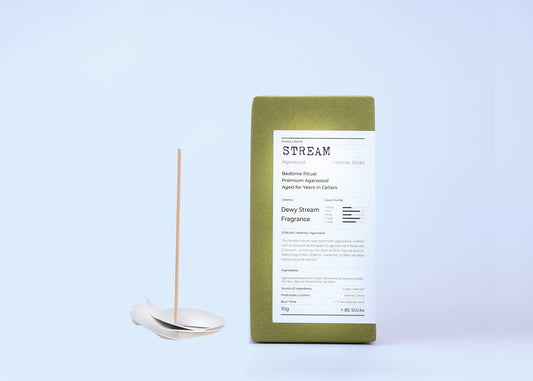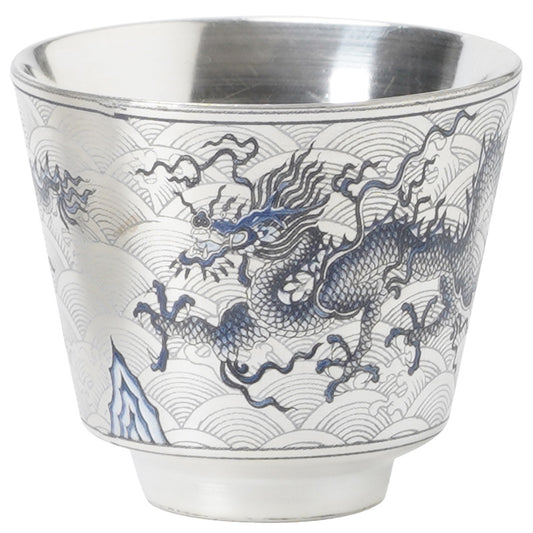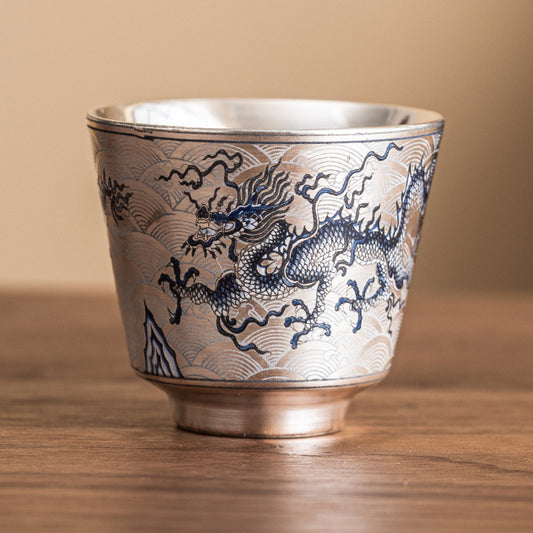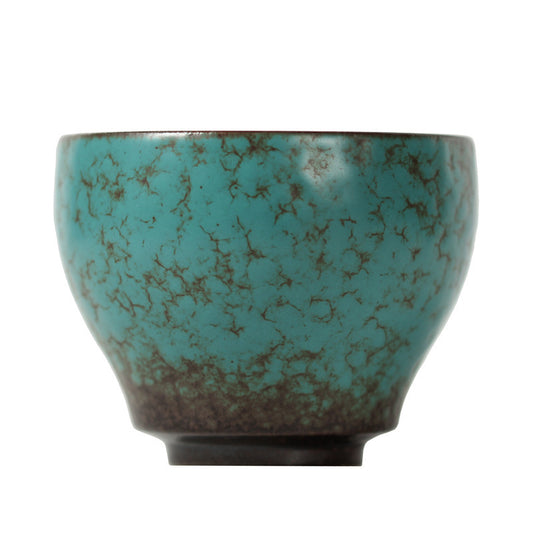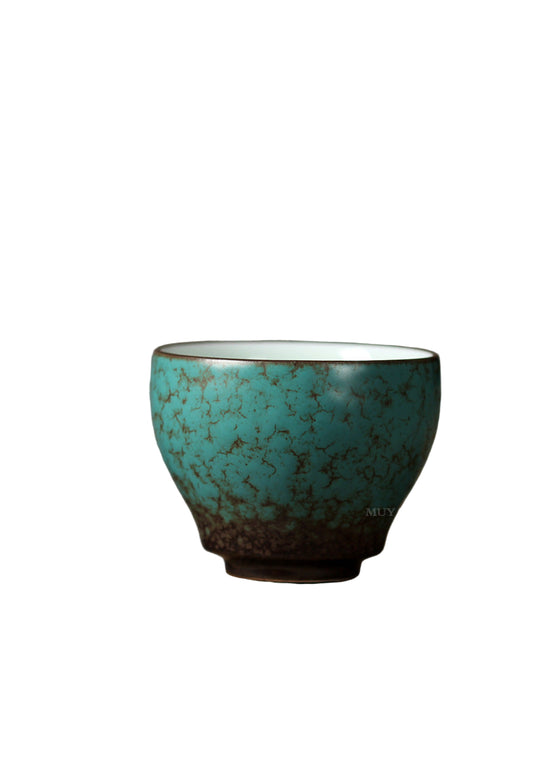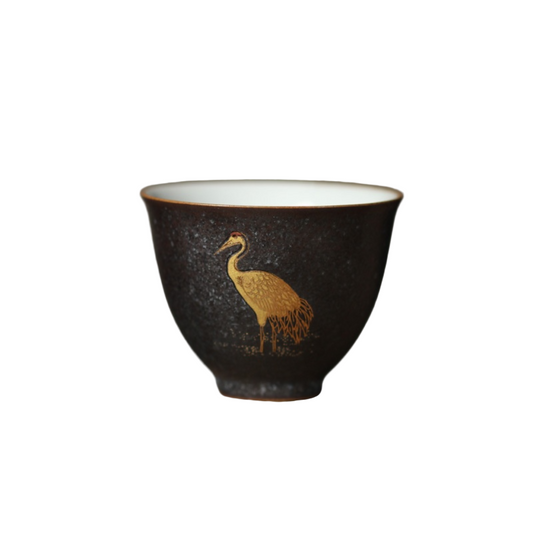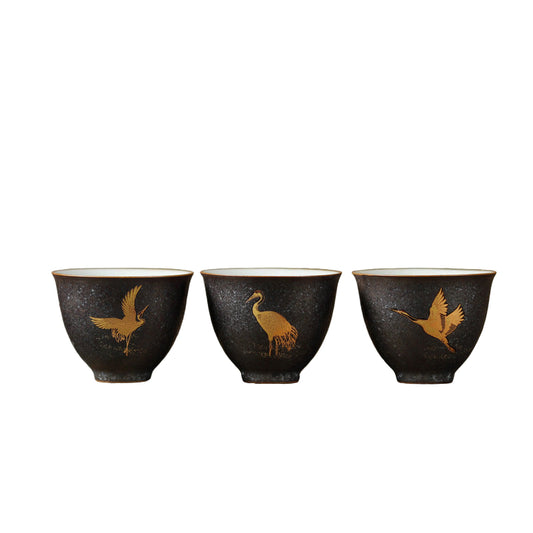
Dehua Porcelain Tea Cup Guide
How Blanc de Chine Became a Quiet Icon of Asian Tea Culture
By MonianLife Tea Ware Studio • Updated November 19, 2025 • MonianLife Tea Culture Guide
On many modern tea tables, a small white cup with a soft glow appears again and again. It looks simple, almost quiet — yet it’s the result of six centuries of craft in a mountain county in Fujian called Dehua. These Dehua porcelain tea cups, known in the West as Blanc de Chine (“white from China”), have travelled from Ming dynasty kilns to Japanese tea rooms, Southeast Asian homes, and now to gongfu tea trays around the world.
Key takeaways:
- Dehua porcelain tea cups come from Dehua county in Fujian, where low-iron kaolin and high-fired oxidation kilns create a warm, jade-like white known as Blanc de Chine.
- They rose to prominence after the Song–Ming shift from dark Jian bowls for whisked tea to white porcelain cups for steeped leaf tea, helping drinkers see liquor color and clarity more clearly.
- Dehua wares spread along the Maritime Silk Road to Japan, Southeast Asia, and Europe; today the Dehua kilns are recognized for their role in global ceramic trade.
- Compared with Jingdezhen and mass-produced white porcelain, Dehua cups tend to have a creamier “mutton-fat” tone, thicker yet refined walls, and a softer, more rounded presentation of aroma and texture.
- Choose Dehua for green, white, light oolong and nuanced sheng puer — teas whose liquor color and subtle sweetness benefit from a neutral, warm white background.
Short Answer: Dehua porcelain tea cups are important in Asian tea history because they bring together exceptionally pure white clay, refined high-firing techniques, and a quiet aesthetic that highlights tea liquor color and aroma. Originating in Fujian during the Ming, they helped mark the move from dark Jian bowls to luminous white cups, spread along the Maritime Silk Road to Japan and beyond, and today remain a favorite choice for gongfu tea drinkers who want a soft, jade-like white that doesn’t distract from the tea itself.
On this page
- Where Dehua porcelain comes from (Fujian, kilns, UNESCO story)
- From black Jian bowls to white Dehua cups
- What makes a Dehua porcelain tea cup unique
- Why Dehua became famous across Asia
- Dehua vs Jingdezhen vs mass-market white porcelain
- How to choose your first Dehua tea cup
- FAQ – Dehua porcelain tea cups
Where Dehua Porcelain Comes From (Fujian, Kilns, UNESCO Story)
Dehua (德化) is a mountainous county in central Fujian, not far from China’s southeast coast. Rich deposits of fine, low-iron porcelain stone made it an ideal place for white porcelain from at least the late Song period, with production reaching a peak in the Ming and Qing dynasties. The French name Blanc de Chine — “white from China” — grew out of European dealers’ fascination with these luminous wares.
Historically, Dehua kilns produced a wide range of pieces: Buddhist figures, libation cups, altar vessels and, crucially for us, small white cups and teapots that travelled with tea itself along maritime trade routes.
In recent years, Dehua’s importance has been formally recognized:
- Dehua porcelain firing techniques have been listed among China’s National Intangible Cultural Heritage.
- Dehua has been named a “World Ceramic Capital” by the World Crafts Council.
- The Dehua kilns are part of the UNESCO World Heritage listing “Quanzhou: Emporium of the World in Song–Yuan China,” honoring their role in medieval maritime trade and cultural exchange.
When you hold a Dehua porcelain tea cup today, you’re holding an object from a living kiln tradition that has been shaping global taste in white porcelain for centuries.
From Black Jian Bowls to White Dehua Cups – A Shift in Tea Aesthetics
To understand why Dehua white cups became so important, we need to step back to the Song dynasty.
In the Song era (960–1279), tea was often prepared as powdered cakes whisked into a froth, similar to today’s Japanese matcha. Dark, iron-rich Jian ware bowls from nearby Jianyang in Fujian were prized because their black or russet glazes made the white tea foam stand out dramatically. Tea treatises from the time praise Jian bowls as “vessels born for tea.”
By the Ming dynasty, habits changed. Emperors and literati increasingly favored loose leaf tea steeped in water, not powdered cakes. Narrower cups and smaller pots were better suited to leaf infusions, and now the color of the liquor — gold, amber, pale green — became as important as the foam had once been.
In this new context, white porcelain tea cups offered two key advantages:
- They showed tea liquor color and clarity with great precision.
- The neutral, glazed surface gave little flavor of its own and was easy to clean.
Dehua, with its pure white clay and mastery of high-fired porcelain, was perfectly positioned to serve this shift. Its small Blanc de Chine cups and later gaiwan-style pieces fit naturally into Ming and Qing tea practice, and modern gongfu tea drinkers are, in many ways, continuing this Ming-era preference: using white cups to “read” tea color and texture.
What Makes Dehua Porcelain Tea Cups Unique? (Clay, Firing, Color, Feel in Hand)
On paper, porcelain everywhere follows the same recipe: refined clay or porcelain stone, carefully proportioned, shaped, dried, then fired at high temperatures. What makes Dehua special is the combination of its local materials and how its potters use them.
1. Exceptionally Pure, Low-Iron Clay
Dehua’s kaolin is unusually pure and low in iron oxide compared with many other porcelain centers. Iron is what often pushes porcelain toward grey or yellow; less iron allows Dehua wares to fire to a bright, sometimes warm white even in an oxidizing atmosphere.
This purity is one reason Blanc de Chine pieces were so admired in Europe and Japan — and why they inspired imitation at Meissen, Hirado, and other kilns.
2. “Mutton-Fat Jade” Glaze and Soft Glow
Many classic Dehua wares have been described as looking like “white and plump jade,” or “lard white” — terms that point to a glaze that’s not harshly clinical, but gently creamy and luminous. Under light, good Dehua cups often show a soft translucency at the rim, as if light is held rather than simply reflected.
For tea, this matters: the liquor seems to float just above the surface, and subtle shifts in hue — from pale straw to deeper amber — are easy to read.
3. Refined but Tactile Wall Thickness
Compared with ultra-thin Jingdezhen “eggshell” porcelain, Dehua cups are often made with slightly thicker walls, especially in sculpted or relief-decorated designs. This gives a reassuring weight in the hand while still feeling refined and light compared with stoneware.
In a gongfu session, this translates into cups that stay warm but not scalding, and that have a rounded lip which many drinkers find comfortable.
4. Sculptural Detail and Quiet Decoration
Dehua’s historic strength has been sculptural work — from Guanyin figures to plum-blossom libation cups. That sculptural tradition carries into many modern tea cups: dragons in low relief, subtle clouds, or barely raised patterns that only appear when light grazes the surface.
There are also very minimal Dehua cups with only a thin blue rim line or a single brushstroke, aligning well with contemporary “quiet luxury” tea aesthetics.
Why Dehua Became Famous Across Asia
Dehua porcelain didn’t stay in Fujian. It travelled – first around Asia, then to the rest of the world.
1. Maritime Silk Road Exports
From the Song and Yuan periods onward, Dehua wares were part of the wider export trade from Fujian’s ports to Southeast Asia, particularly present-day Indonesia and the Philippines. Shipwrecks and coastal finds show Dehua porcelain scattered along these routes, often alongside other trade goods like tea and spices.
2. Japan: Hakuji, Hakugorai and the Tea Room
Large numbers of Blanc de Chine pieces reached Japan, where Dehua white porcelain became deeply embedded in religious and domestic life. Many fine examples survive in Japanese family altars and temple collections.
Plain Dehua-inspired whiteware in Japan is known as hakuji, a style originally developed in imitation of Dehua porcelain. These plain white bowls, cups and small ritual vessels sit easily alongside other tea utensils, and some pieces were used in or around the tea ceremony itself.
3. Southeast Asia and Overseas Chinese Communities
Dehua porcelain appeared in Southeast Asian households, temples and shop altars, carried by Fujianese merchants who settled around the region. Bright white Dehua cups, saucers and small teapots often became everyday wares in homes that brewed Chinese tea daily — habits that continue in places like Singapore and Malaysia today.
4. Europe: Blanc de Chine and the Birth of European Porcelain
By the 17th–18th centuries, Dehua white porcelain was arriving in Europe as part of the broader export porcelain trade. European collectors and chemists were fascinated by its whiteness and translucency; Blanc de Chine prototypes were studied and imitated at Meissen and other early European factories, laying groundwork for Europe’s own hard-paste porcelain.
Because of this history, when we talk about “white porcelain” in Asia or the West, we are often standing in a conversation that Dehua helped to start.

Dehua vs Jingdezhen – Which Tea Cup for Which Drinker?
Dehua is not the only famous porcelain center in China. Jingdezhen in Jiangxi province has its own rich history and is often called the “Porcelain Capital”. For a tea drinker choosing cups, the most useful question is not “which is better?” but “which is better for this tea and this mood?”
The table below offers a gentle comparison between three common options: handcrafted Dehua cups, artisan Jingdezhen cups, and mass-produced factory white porcelain.
| Aspect | Dehua porcelain tea cup | Jingdezhen artisan porcelain | Mass-market white porcelain |
|---|---|---|---|
| Typical color tone | Warm ivory / “mutton-fat jade” white; sometimes slightly creamy. | Cooler, brighter white; often combined with blue-and-white or overglaze painting. | Neutral or slightly grey-white, depending on clay and glaze. |
| Translucency & texture | Soft translucency at rim; smooth, silky glaze, slightly thicker body. | Often very thin, “eggshell” walls with high translucency; crisp, glassy glaze. | Variable; usually thicker, heavier, less refined surface. |
| Clay & firing | Low-iron kaolin, high-fired in oxidizing atmosphere for bright warm white. | High-fired porcelain with a wide range of glazes and underglaze decoration. | Industrial bodies and glazes, optimized for cost and durability. |
| Tea expression (reported by drinkers) | Softens edges slightly; good for sweetness, mouthfeel, and balance. | Emphasises aroma and “high notes”; very clear, bright expression. | Neutral to dull; sometimes numbs aroma if glaze is coarse. |
| Typical price range (single artisan cup) | Mid to high: you pay for clay quality and handwork. | Wide range; fine painted pieces can be very high-end. | Low; usually sold in boxed sets. |
| Best for these drinkers | Tea lovers who enjoy quiet, tactile cups and nuanced sweetness; ideal for green, white, light oolong. | Drinkers focused on aroma, complexity and visual decoration; excellent for aromatic oolongs and floral black teas. | Beginners, office use, or those who prioritize durability and cost over fine detail. |
There is no strict rule. Many tea tables mix Dehua and Jingdezhen pieces: a Dehua cup for soft sheng puer, a Jingdezhen cup for high-fragrance gaoshan oolong, and a sturdy factory cup kept at the office.

How to Choose Your First Dehua Tea Cup
When you are ready to invite a Dehua porcelain tea cup onto your tea tray, a few practical considerations will help you choose well.
1. Capacity and Shape
- Capacity: For gongfu brewing, many drinkers prefer 30–60 ml cups. Smaller cups (around 30–40 ml) pair well with intense oolongs or sheng puer; 50–60 ml suits gentler green and white teas.
- Shape: Slightly flared rims help aroma rise; deeper “tulip” shapes hold heat a bit longer. A simple, round bowl shape is the most versatile and easiest to drink from.
2. Wall Thickness and Handfeel
- Thin wall: Feels delicate and cools quickly; good for very hot infusions you want to sip right away.
- Medium wall (common in Dehua): Holds warmth but is still refined in the hand; ideal for everyday use and slower, contemplative sessions.
3. Glaze Style and Decoration
- Plain Blanc de Chine: Pure ivory white, with only the play of light and tea color. This is the most “neutral” choice for tea evaluation.
- Low relief motifs: Dragons, plum blossoms or clouds that you feel more than see; they add tactility without distracting from the tea.
- Blue-and-white with silver or metal rims: These connect Dehua’s white body with classic Chinese painting traditions and a hint of luxury. For example, a blue-and-white dragon Dehua teacup with silver inlay wraps rich symbolism around a functional gongfu cup.
4. Tea Types That Shine in Dehua
Because Dehua porcelain is glazed and neutral, it doesn’t “season” like Yixing clay, and it works with any tea. Still, some pairings feel especially harmonious:
- Green and white tea: The pale liquor looks luminous against warm white; the neutral surface protects delicate aromatics.
- Light and medium oolong: Jade-colored Tieguanyin or high-mountain oolongs look vibrant and their texture is easy to perceive.
- Elegant sheng puer: Younger, floral sheng whose color you want to monitor as it ages.
5. Everyday Care
Dehua porcelain is strong for its thickness, but it’s still porcelain — treat it kindly:
- Rinse with warm water after each session; mild, fragrance-free soap is fine if needed.
- Avoid sudden temperature shocks (e.g., ice-cold water into a just-used hot cup).
- To remove tea stains, use a soft sponge and a paste of baking soda or a bit of food-safe citric acid rather than harsh abrasives.
Monian’s Dehua Teacups: Quiet Objects for Daily Ritual
At MonianLife we gravitate toward tea ware that feels calm in the hand and steady on the table — pieces that support the tea rather than shouting over it. Dehua porcelain naturally fits this philosophy: the cups seem to disappear around the liquor, leaving only color, aroma and the small pause between sips.
Our Five Kilns Dehua porcelain teacup gift set gathers five forms inspired by famous historic kilns into one quiet, ivory-white collection — ideal if you want to explore how different silhouettes change aroma and mouthfeel.
For drinkers who enjoy a touch of story and symbolism, the blue-and-white dragon Dehua teacup with silver inlay layers classic dragon imagery and a hand-applied silver rim over Dehua’s warm white body, balancing ceremony with everyday usability.
If you are still exploring, MonianLife’s Tea Cup collection is a gentle place to browse: each cup notes its origin, material and mood so you can match it with your own way of drinking tea.
FAQ – Dehua Porcelain Tea Cups Explained
Q: Is Dehua porcelain safe for daily tea drinking?
A: Yes. Dehua porcelain is high-fired, fully vitrified ceramic made from refined kaolin and porcelain stone. When properly fired and glazed, a Dehua porcelain tea cup is non-porous and safe for everyday use with hot water and tea.
Q: What teas look best in Dehua white cups?
A: Dehua’s warm white glaze makes subtle liquor colors easy to read, so it pairs beautifully with green tea, white tea, light oolongs and elegant sheng puer. The neutral, glazed surface also makes it suitable for black tea and darker oolongs when you want a clear view of the liquor and a cup that does not impose its own flavor.
Q: How fragile are Dehua porcelain cups compared to glass?
A: Dehua porcelain tea cups are generally tougher than thin glass cups at the same thickness. The vitrified body resists scratching, and the slightly thicker walls common in many Dehua designs provide extra strength. That said, they can still chip or crack if dropped or exposed to sudden temperature shock, so treat them with the same care you’d give any fine porcelain.
Q: How do I care for and clean Dehua porcelain teacups?
A: Rinse your Dehua porcelain tea cups with warm water after each session, and occasionally wash with a mild, unscented detergent. Avoid metal scouring pads and very abrasive powders that can dull the glaze. For tea stains, use a soft sponge with baking soda or a short soak in warm water with a little citric acid, then rinse thoroughly. Store cups upright in a stable spot where rims won’t knock against each other.
Bring the Practice to Life
A teacup is a small object, but choosing one with care can change how you experience every infusion. Dehua porcelain invites a particular kind of attention: humble, steady, quietly luminous. Whether you choose a plain Blanc de Chine cup or a dragon-rimmed piece with silver inlay, the point is the same — to give your tea a calm space to unfold.
- Five Kilns Dehua porcelain teacup gift set
- blue-and-white dragon Dehua teacup with silver inlay
- MonianLife’s Tea Cup collection
::contentReference[oaicite:0]{index=0}


